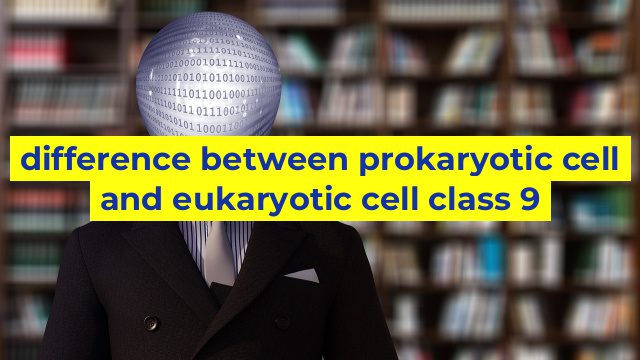Difference Between Prokaryotic Cell and Eukaryotic Cell
All living organisms are made up of cells which are the building blocks of life. The cells can be of two types prokaryotic and eukaryotic. Both types of cells share some similarities, but they are also quite different from each other in many ways. In this article, we will discuss the difference between prokaryotic cell and eukaryotic cell.
Prokaryotic Cell
Prokaryotic cells are single-celled organisms that lack a nucleus and other membrane-bound organelles. They are usually smaller in size than the eukaryotic cells, typically ranging from 0.2 to 2 micrometers in diameter. Prokaryotic cells are found in bacteria and archaea, two domains of life.
The major characteristics of prokaryotic cells include:
- No true nucleus
- No membrane-bound organelles
- Have a simple structure
- Ribosomes are present
- Single, circular chromosome
- Cell wall present
Eukaryotic Cell
Eukaryotic cells, on the other hand, are much more complex and are found in plants, animals, fungi, and protists. They are typically larger than prokaryotic cells, ranging from 10 to 100 micrometers in diameter. Furthermore, they have a true nucleus and other membrane-bound organelles, which provide a much more efficient division of labor within the cell.
The major characteristics of eukaryotic cells include:
- Has a true nucleus
- Contains membrane-bound organelles
- Has a complex structure
- Ribosomes are present
- Multiple, linear chromosomes
- Some cells have a cell wall present
Similarities Between Prokaryotic Cell and Eukaryotic Cell
Both types of cells have some similarities as well. For example:
- Both are bounded by a cell membrane
- Both contain DNA as their genetic material
- Both have ribosomes for protein synthesis
Conclusion
In conclusion, prokaryotic cells are simple, single-celled organisms that lack a true nucleus and other membrane-bound organelles. On the other hand, eukaryotic cells are more complex and have a true nucleus and other membrane-bound organelles. While both types of cells share some similarities, they differ greatly in their structure and function.
Table difference between prokaryotic cell and eukaryotic cell class 9
| Features | Prokaryotic Cell | Eukaryotic Cell |
|---|---|---|
| Nucleus | Not present | Present |
| Size | Smaller (1-10 μm) | Larger (10-100 μm) |
| Membrane-bound organelles | Absent | Present (e.g. mitochondria, chloroplasts, endoplasmic reticulum, Golgi apparatus) |
| Cell wall | Present (made of peptidoglycan) | Present in some (e.g. plants, fungi, bacteria) and absent in others (e.g. animals) |
| Ribosomes | Present (70S) | Present (80S) |
| Cytoskeleton | Absent | Present (made of microtubules, microfilaments, and intermediate filaments) |
| Reproduction | Asexual (binary fission) | Asexual (mitosis) and sexual (meiosis) |


